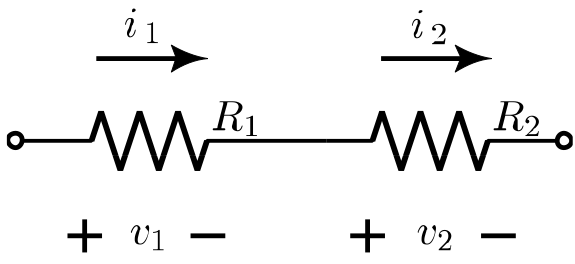“Resistance is useless.” – Daleks; Doctor Who
Resistors in series: \( R_{1} + R_{2} + R_{3} \)
Resistors in parallel: \( \left ( \frac{1}{R_{1}} + \frac{1}{R_{2}} + \frac{1}{R_{3}} \right )^{-1} \)
Voltage divider (using resistors in series): \( v_1=\frac{R_1}{R_1+R_2}v \)

- \( v_1 \) = The voltage across the first resistor
- v = The voltage across both resistors
Current divider (using resistors in parallel): \( i_1=\frac{R_2}{R_1+R_2}i \)

- \( i_1 \) = The current through the first resistor.
At RF, all resistors act like a resistor, an inductor, and a capacitor. For the three major types of resistors:
- Carbon composition resistors - act a lot like a capacitor, due to the capacitance between the granules.
- Wirewound resistors - act a lot like an inductor, because the wire looks a lot like a coil.
- Metal film resistors - act closer to an ideal resistor (but not perfectly so) than the other types. “Thin film” surface mount are the best of the best.